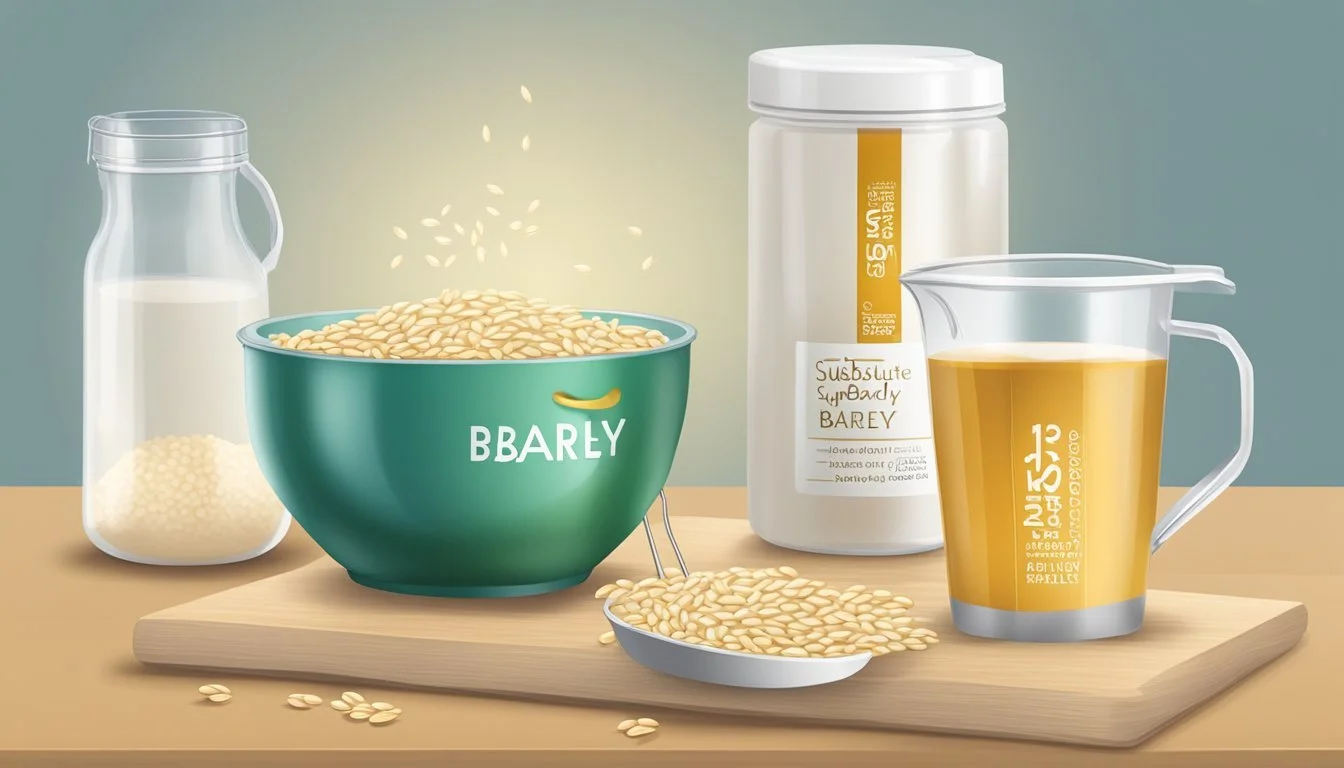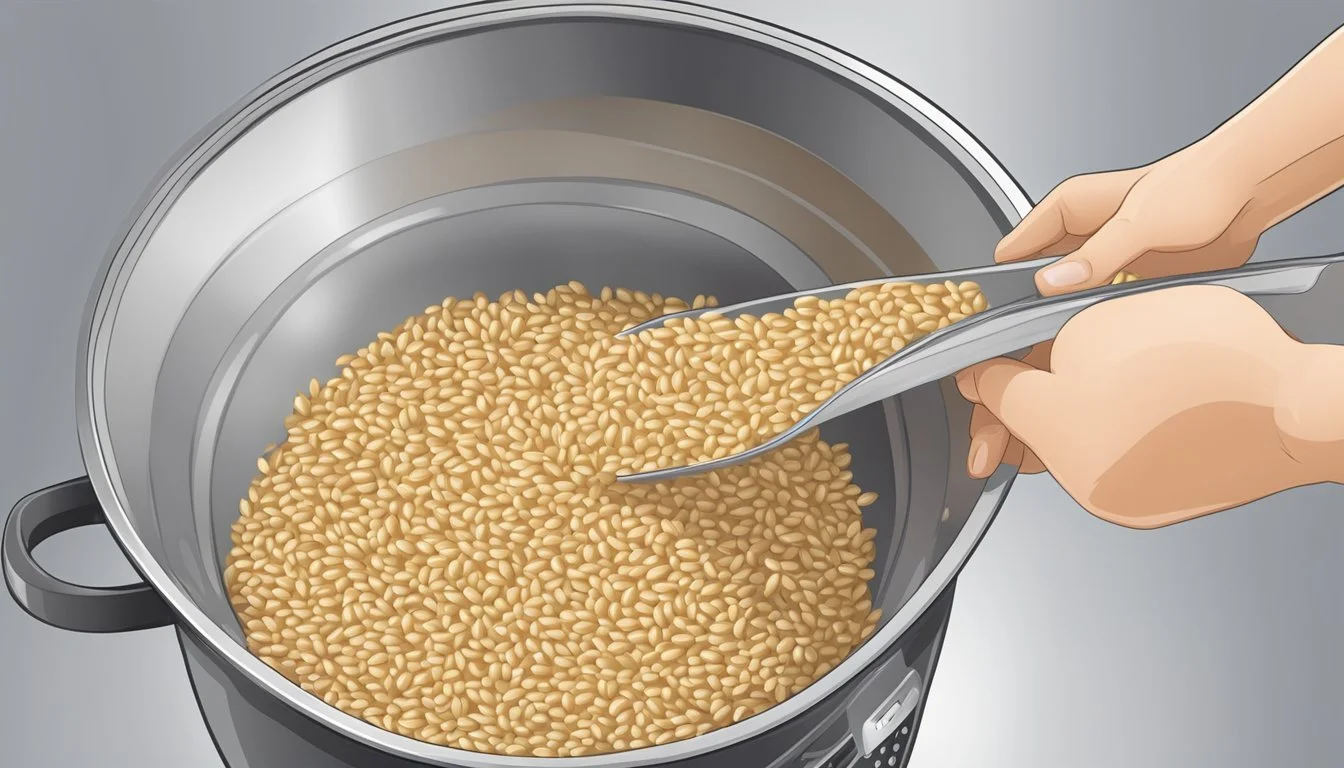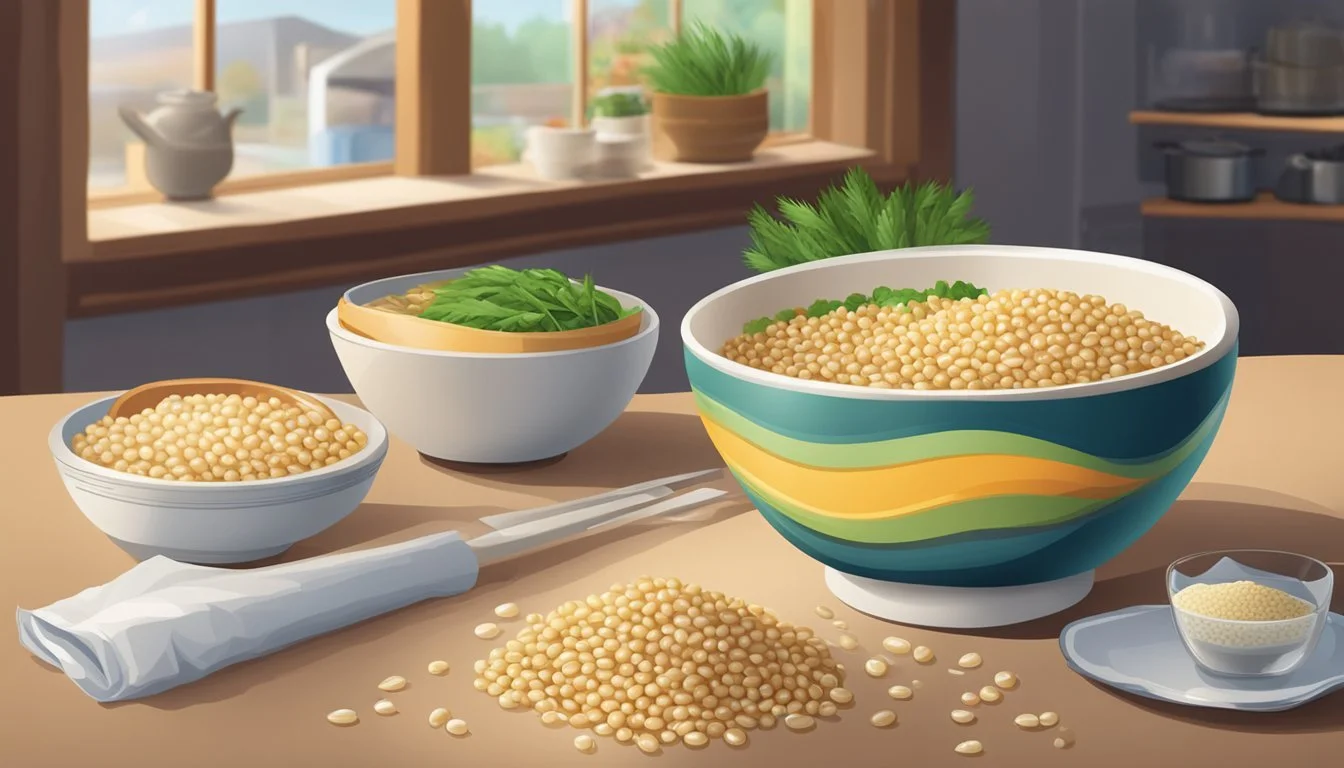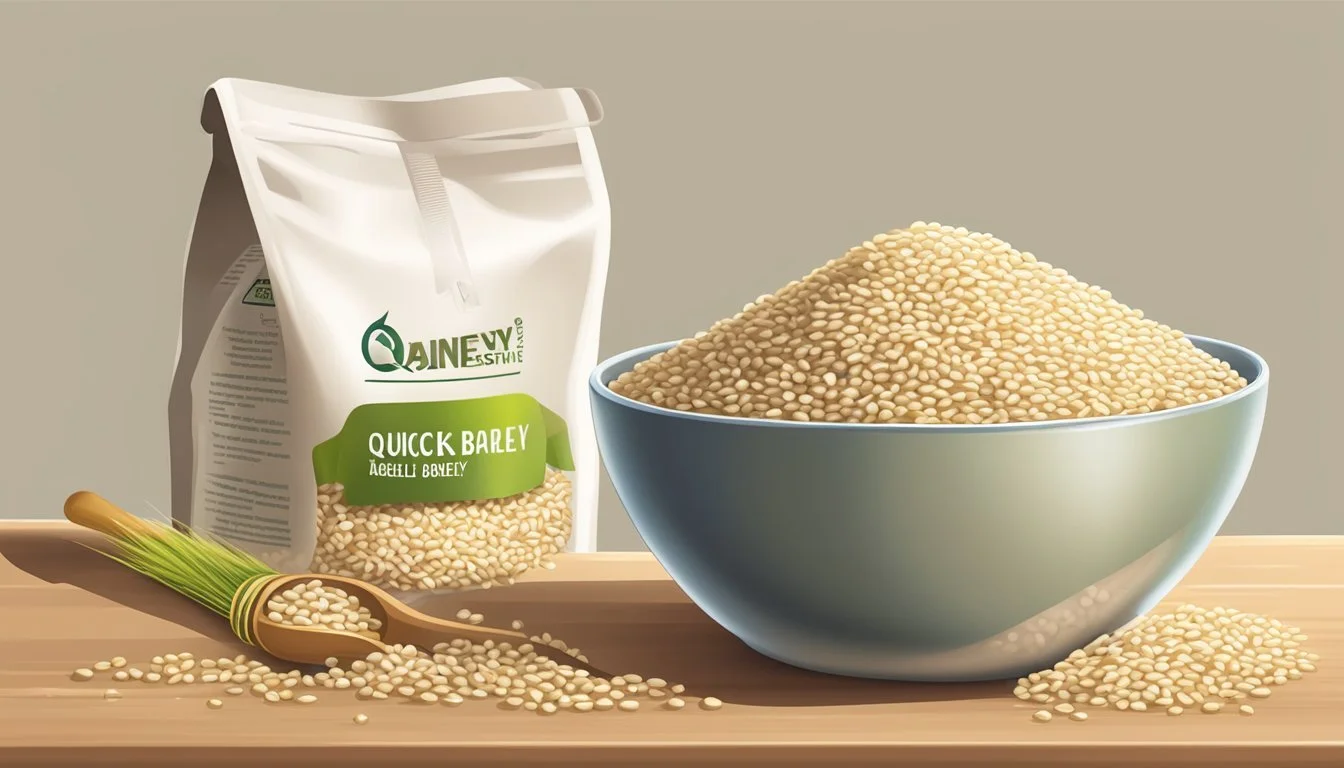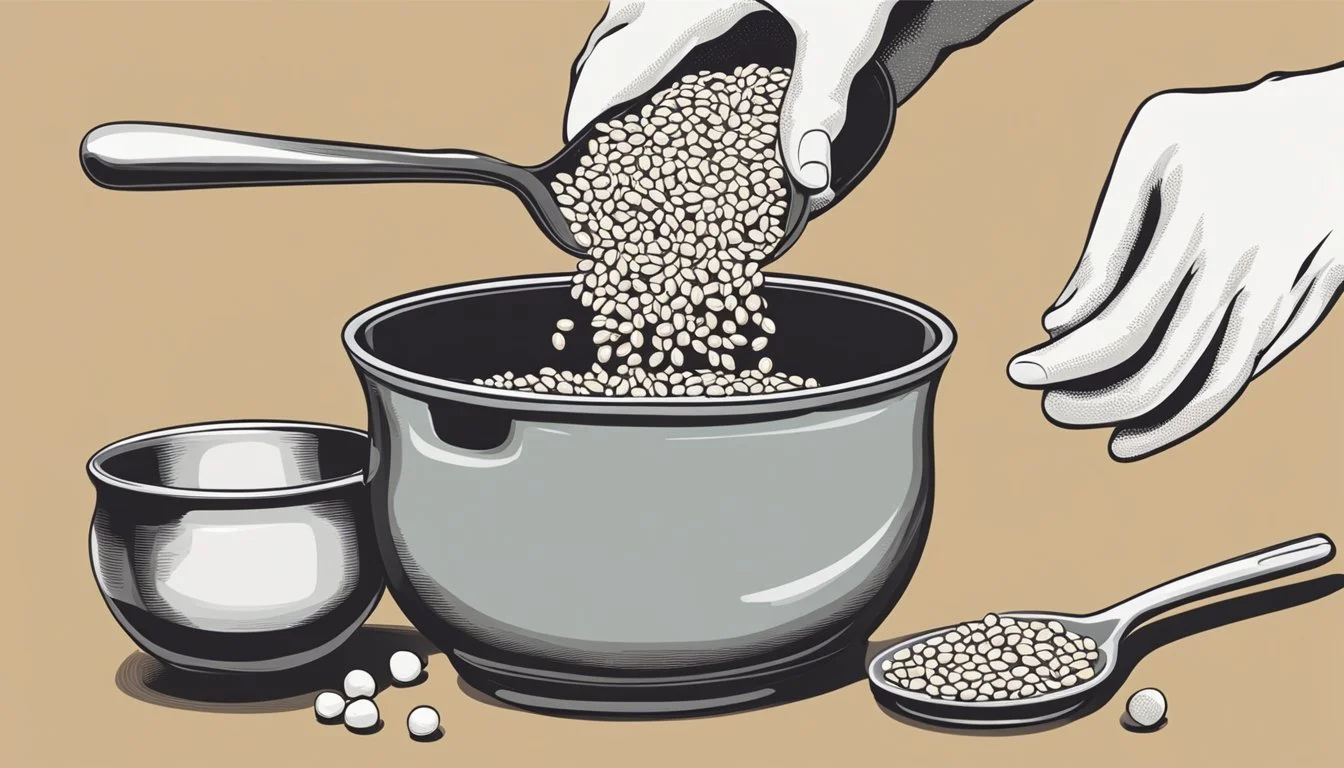How to Substitute Quick-Cooking Barley for Pearl Barley
A Step-by-Step Guide
Barley is a versatile grain commonly used in soups, stews, salads, and side dishes. It offers a pleasant chewy texture and a nutty flavor that complements a variety of recipes. Among the different forms of barley available, pearl barley and quick-cooking barley are two popular choices. Pearl barley is the more traditional form, with its outer husk and bran layers removed, resulting in a grain that is polished or "pearled." It typically requires longer cooking times due to its less processed nature.
Quick-cooking barley, on the other hand, is a processed form of pearl barley that's been precooked and dried to reduce its preparation time. This convenience makes it an attractive option for those who wish to save time in the kitchen. When substituting quick-cooking barley for pearl barley, it's crucial to understand that the quicker alternative cooks in about half the time of its pearled counterpart. Adjusting the cooking time is essential to achieve the desired texture and to ensure the barley is properly incorporated into the dish.
To seamlessly substitute quick-cooking barley for pearl barley, it's necessary to be mindful of the differences in cooking methods and liquid absorption rates. While pearl barley commonly absorbs more liquid and imparts a richer flavor to the dish it's cooked in, quick-cooking barley will require less liquid and a shorter cooking period. This adjustment ensures that the grain doesn't become overly soft or lose its characteristic chewy texture. The ratio of liquid to grain, along with the adjusted cooking times, allows quick-cooking barley to be a convenient stand-in for pearl barley in most recipes.
Understanding Barley
Barley is a versatile cereal grain with various culinary applications and significant health benefits due to its nutritional content. This section delves into the different types of barley and their nutritional profiles.
Types of Barley
Pearl Barley: This common variety has its outer hull and bran layers removed, resulting in grains with a polished appearance. Pearl barley is considered less of a whole grain due to this processing, but it still retains a significant amount of nutrients.
Cooking Time: Approximately 20 minutes
Texture: Firm and chewy with a slight crunch when cooked
Quick-Cooking Barley: This type is pre-steamed and dried for faster cooking. It offers similar nutritional benefits as pearl barley but with a reduced cooking time.
Cooking Time: Roughly 10 minutes
Texture: Softer than pearl barley due to additional processing
Nutritional Profile
Barley is regarded for its high nutritional value, including a notable fiber content, which supports digestive health. It is an excellent source of protein, vitamins, and minerals, providing a beneficial addition to many diets.
Nutritional Highlights per 1/2 Cup of Cooked Barley:
Calories: Approximately 95 calories
Carbohydrates: 22 grams
Protein: 3 grams
Fiber: Varied depending on the type, but typically high
Vitamins and Minerals: Contains B-vitamins, iron, magnesium, and zinc
Antioxidants: Phytic acid, ferulic acid, and lignans
Considerations for Dietary Restrictions:
Barley contains gluten, which may not be suitable for individuals with gluten-related disorders. In terms of nutritional value, both pearl and quick-cooking barley can be integral parts of a healthy diet, contributing to the intake of essential nutrients.
Identifying Differences
In the realm of barley, understanding the distinctions between quick-cooking and pearl barley is crucial for proper substitution in recipes. Texture and cooking times are the primary differences that affect how these grains are incorporated into dishes.
Quick-Cooking vs Pearl Barley
Quick-cooking barley:
Cooking Time: Requires approximately 10 minutes to prepare.
Preparation Process: Pre-steamed to reduce cooking time.
Pearl barley:
Cooking Time: Typically takes 30 to 45 minutes to cook.
Preparation Process: Has the outer husk and bran layers removed, which shortens cooking time compared to unhulled barley but not as much as quick-cooking barley.
Physical Characteristics
Pearl barley:
Texture: Pearl barley is firm and chewy, with a slight crunch when cooked properly.
Flavor: Exhibits a notable, nutty flavor as the grain retains more of its inherent taste.
Appearance: Grains are polished, leading to a smoother texture and a pale, yellow color.
Quick-cooking barley:
Texture: Generally softer than pearl barley due to the pre-steaming process.
Flavor: More neutral flavor profile; adapts to flavors of the dish more readily.
Appearance: Similar to pearl barley but may look slightly more processed due to the pre-cooking.
Cooking Techniques
In cooking barley, the main distinctions lie in the preparation steps and cooking time. One must consider these factors to achieve the desired texture and flavor when using barley in recipes.
Preparing Pearl Barley
Pearl barley requires thorough rinsing under cold water to remove any dust or debris from its surface. It's commonly recommended to soak pearl barley in water to cut down cooking time, although this step is optional. Soaking can be done for several hours or overnight, but if a cook is pressed for time, even a one-hour pre-soak can be advantageous. After soaking, drain and add the barley to boiling water, using a ratio of approximately three cups of liquid to one cup of pearl barley. Boiling time typically ranges around 25 to 30 minutes until tender but still chewy.
Substituting with Quick-Cooking Barley
Substituting pearl barley with quick-cooking barley is straightforward: omit the pre-soaking step. Quick-cooking barley, sometimes referred to as hulled barley, is pre-steamed and dried for convenience, thereby reducing its cooking time significantly. When cooking quick-cooking barley, use one cup of grain to two cups of liquid and cook for about 10 to 15 minutes. Remember that liquid absorption and cooking times may vary slightly, so it's wise to check the barley's texture toward the end of the cooking process.
Adapting Recipes for Barley Substitution
When substituting quick-cooking barley for pearl barley, cooks must consider the differences in liquid absorption and cooking times to maintain the integrity of dishes such as soups, stews, and pilafs. Careful adjustments ensure that the consistency and ability of the grain to absorb flavors are preserved, especially in dishes where barley is a key ingredient.
Adjusting Liquid Ratios
Quick-cooking barley tends to require less broth or stock than pearl barley. For instance, if a recipe for soup or stew calls for one cup of pearl barley:
Pearl Barley: typically uses about 3 cups of liquid.
Quick-Cooking Barley: often just needs about 2 cups of liquid.
Dish Type Pearl Barley Liquid Ratio Quick-Cooking Barley Liquid Ratio Soups and Stews 3:1 (liquid to barley) 2:1 (liquid to barley) Pilafs 2.5:1 (liquid to barley) 1.75:1 (liquid to barley) Salads Follow salad-specific instructions, reducing liquid by roughly 25% compared to pearl barley.
Modifying Cooking Times
The cooking time for quick-cooking barley is significantly shorter than pearl barley, which can impact the texture and flavor absorption in dishes.
Pearl Barley: may take 45-60 minutes to cook fully.
Quick-Cooking Barley: general cooking time is around 10-15 minutes.
For soups and stews:
Add quick-cooking barley later in the cooking process to prevent overcooking.
For other dishes like pilafs and salads, where pearl barley might simmer for a while to develop flavor, shortening the cooking time of quick-cooking barley means that it should be added at the final stages, usually the last 10-15 minutes of cooking.
Alternative Grains
When substituting quick-cooking barley for pearl barley, individuals can explore a variety of grains, each offering distinct nutritional profiles and cooking properties. The key for a successful substitution lies in understanding the cooking times and water ratio requirements for alternative grains, some of which may be gluten-free or carry a nutty flavor that complements various dishes.
Gluten-Free Options
For those requiring a gluten-free substitute for pearl barley, several grains can serve as excellent replacements in recipes, providing varied carbohydrate sources and a spectrum of flavors and textures. Notable gluten-free grains include:
Quinoa: This versatile seed boasts a complete amino acid profile and can be used as a one-to-one replacement for pearl barley. Quinoa typically requires about 2 cups of water per cup of grain and cooks in approximately 15-20 minutes.
Brown Rice: A widely available whole grain that mimics the chewy texture of pearl barley. Brown rice requires about 2 1/2 cups of water for each cup of grain and cooks in 45-50 minutes.
Buckwheat: Lower in calories and carbohydrates, buckwheat provides 2 grams of fiber and 6 grams of protein per 1/4 cup of dried grain.
Millet: A small, round grain that cooks quickly and offers a mild flavor.
Teff: A tiny seed known for its quick cooking time and high nutrient content, especially suitable for those with gluten intolerance.
Amaranth: Rich in protein and essential lysine, amaranth adds a distinctive flavor and boasts a quick cooking time.
Sorghum: This hearty grain requires a longer cooking time but provides a nutritious gluten-free alternative.
Nutty Flavor Alternatives
For those desiring grains with a nutty flavor similar to pearl barley, the following grains are considered the best substitutes:
Farro: With a chewy texture and rich, nutty flavor, farro makes a great alternative to barley. One should soak farro overnight to shorten the cooking time, which is usually reduced to about 30 minutes after soaking.
Bulgur Wheat: A form of whole wheat that has been cleaned, partly cooked, and cracked, bulgur has a mild nutty flavor. When substituting for pearl barley, use a similar one-to-one ratio and adjust the cooking time as bulgur cooks in just 10-15 minutes.
Wild Rice: Although not a true rice, this aquatic grass seed provides a gourmet nutty flavor. It generally requires a cooking time of about 45 minutes.
Wheat Berries: The whole wheat kernel, excluding the hull, wheat berries have a chewy bite and take about an hour to cook.
In summary, alternative grains like quinoa, brown rice, buckwheat, farro, and millet offer diverse substitutes for pearl barley with varying flavors, textures, and nutritional benefits. Whether one seeks a gluten-free option or desires the rich nuttiness reminiscent of barley, the choices are abundant and adaptable to most recipes.
Barley in Different Cuisines
Barley, a versatile whole grain, is often leveraged to bring a delightful chewiness and nutty flavor to a variety of dishes, from soups and stews to salads and pilafs. Its adaptability makes it a staple in many culinary traditions around the world.
Utilizing Barley in Soups and Stews
Incorporating barley into soups and stews not only thickens the broth but also adds a hearty texture. A classic example is Scotch Broth, a traditional Scottish soup where pearl barley is simmered with lamb or beef and root vegetables. When substituting quick-cooking barley for pearl barley in these dishes, one should reduce cooking time as the former cooks in approximately half the time.
Sample Recipe Modification:
Pearl Barley: Simmer for approx. 20 mins.
Quick-Cooking Barley: Simmer for approx. 10 mins.
Integrating Barley into Salads and Pilafs
Barley salads and pilafs offer a nutritious alternative to traditional rice dishes. For instance, in the Mediterranean, barley is often combined with fresh vegetables, herbs, and a vinaigrette to create a barley salad. Similarly, Middle Eastern pilafs can contain barley as a base, seasoned with spices and studded with nuts and raisins. It's important to adjust liquid ratios and cooking times accordingly when using quick-cooking barley.
Example Salad Ingredient Swap:
Replace rice with an equal amount of cooked barley.
Barley as a Side Dish
Barley can be used in place of rice or other grains to accompany the main course. In Eastern Europe, barley might be found alongside stews or as a base for vegetable gratins. While pearl barley would impart a better flavor to a dish due to its longer cooking time, quick-cooking barley is a time-saving alternative that retains the grain's nutritional benefits.
Table for Cooking Quick-Cooking Barley vs. Pearl Barley:
Grain Type Water Ratio Cooking Time Pearl Barley 1:3 45-50 mins Quick-Cooking Barley 1:2 10-15 mins
Barley Flakes: An alternative to using whole barley grains, barley flakes cook even more rapidly and can act as a thickener for soups or as a nutritious addition to breakfast cereals.
Health and Dietary Considerations
When considering substituting quick-cooking barley for pearl barley, one must take into account the potential impacts on health and diet. Both forms of barley offer nutritional benefits, but understanding how they interact with specific dietary concerns is crucial.
Barley and Blood Sugar Levels
Barley, as a whole grain, is known for its high fiber content, which can have a positive effect on blood sugar levels. It ranks low on the glycemic index, which means it causes a slower, more gradual rise in blood sugar levels compared to more refined grains. Both pearl and quick-cooking barley contain this beneficial fiber, but because quick-cooking barley is more processed, it may have a slightly higher glycemic index than pearl barley.
Weight Management
In terms of calories and nutritional value, there is little difference between pearl and quick barley. As a healthy grain, barley can make a valuable contribution to weight management strategies. Its high fiber content contributes to a feeling of fullness, potentially helping to control appetite and reduce overall calorie intake. Moreover, barley is a nutritious option, providing a range of vitamins and minerals beneficial for a balanced diet.
Remember, whenever making a substitution in dietary habits, one should consider how it aligns with any dietary restrictions they may have and the overall goals for their health and nutrition.
Commercial Uses of Barley
Barley is a versatile cereal grain that plays a critical role in various industries, most notably in brewing and food production, where its unique properties are highly valued.
Barley in Brewing
Malt: The majority of barley in brewing is used to produce malt. Barley grains are soaked, germinated, and then dried in a careful malting process. This process allows enzymes to convert the starches into fermentable sugars, which are pivotal in brewing beer.
Beer: In beer production, malted barley is milled and then mashed to extract fermentable sugars. The sugars are later fermented by yeast to produce alcohol, which gives beer its characteristic taste and contains a small percentage of fat.
Barley in Food Industries
Barley Flour: Barley flour, derived from milled barley, is utilized as a nutritious thickening agent in soups, stews, and sauces. It's an alternative to wheat flour for those seeking variety in grain options, and it offers a different flavor profile.
Flake-Rolling Process: The flake-rolling process involves barley grains being softened by steaming and then flattened. This creates flakes similar to rolled oats. Quick-cooking barley undergoes an additional round of steaming to reduce cooking time, making it distinct from the traditional pearl barley, which retains more of the barley flavor and a chewier texture.
Industries utilize various types of barley with specific qualities suitable for their products, such as the aforementioned quick-cooking barley for consumer convenience or malt varieties that can affect the flavor profile of beers.

